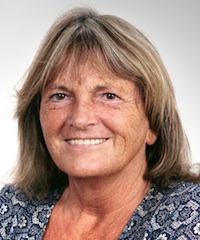Nanny Wermuth is professor emerita at the Division of Mathematical Statistics, Chalmers University of Technology in Gothenburg, Sweden, and affiliated professor at the Medical School of the Gutenberg University in Mainz, Germany. Among her main research interests are multivariate statistical models and their properties, especially graphical Markov models, as well as their applications in the life sciences and in the natural sciences. She has served the profession as, among other positions, president of the International Biometric Society and of the IMS. Nanny’s Medallion Lecture will be at JSM in Chicago, on Monday, August 1, at 10:30am. (There are two related sessions that Nanny also highlights below, immediately before and after the Medallion session.)
Tracing Pathways of Dependence—How far did we get?
Tracing pathways of dependence to understand development was a main aim of geneticist Sewall Wright when he formulated – a century ago – linear data generating processes, represented them by directed graphs and evaluated the fit to his data.
Path analysis was generalised with structural equation models by concentrating still on linear relations but including joint responses and hidden variables. Intensive discussions of special aspects were reported in some of the Berkeley symposia from 1945 to 1972.
A different extension, named graphical Markov models, started to be developed in the late 1970s by using Andrej Markov’s concept of conditional independence to define missing edges in graphs, which consist of nodes representing variables and of edges allowing conditional dependences. These models permit variables of any type and hence more complex than linear relations. Conditioning sets are defined by the type of graph, which may contain directed and undirected edges and an ordering of the nodes as given, for instance, by time in a hypothesised generating process.
We now have a subclass, named ‘traceable regressions’, most suitable to model development in ordered single and joint responses together with structure in a set of context variables. The main difficulties were to find (1) testable properties of generated distributions, which needed to concentrate on conditional dependences, in addition to Markov structure, and (2) an operator for graphs which reflect effects of ignoring some of the variables or of conditioning on fixed levels of other variables, or of both combined. These are essential for combining evidence from related, different studies.
In this lecture, I will try to summarise some of the important insights obtained in the last 40 years for traceable regressions and to point towards what I regard as important open questions.
In addition to my lecture, there will be two further sessions [on the same day], concerning graphical Markov models, with eight speakers who received their PhD within the last ten years.
The first is Graphical Markov Models: Extending, Combining, and Evaluating Concepts. This session is organized by Giovanni Maria Marchetti (University of Florence), with speakers Po-Ling Loh (University of Pennsylvania, Philadelphia), Kayvan Sadeghi (University of Cambridge), Piotr Zwiernik (Pompeu Fabra University, Barcelona) and Bala Rajaratnam (Stanford University), and
The other one is Recent Enhancements of Graphical Markov Models. This session is organized by me, and features speakers Monia Lupparelli (University of Bologna), Robin Evans (Oxford University), Caroline Uhler (MIT, Cambridge) and Elias Bareinboim (Purdue University, West Lafayette).

Comments on “Medallion lecture preview: Nanny Wermuth”